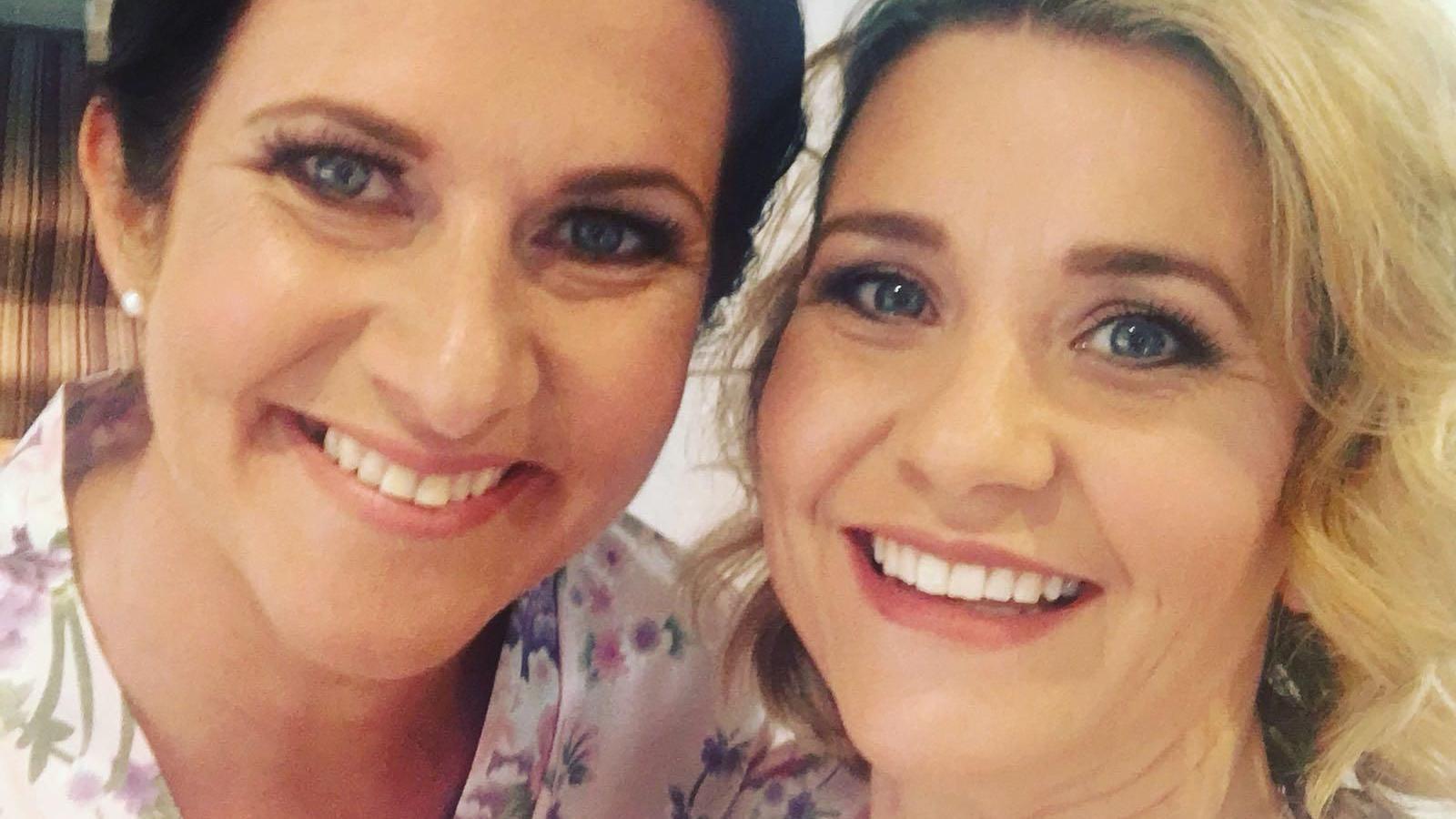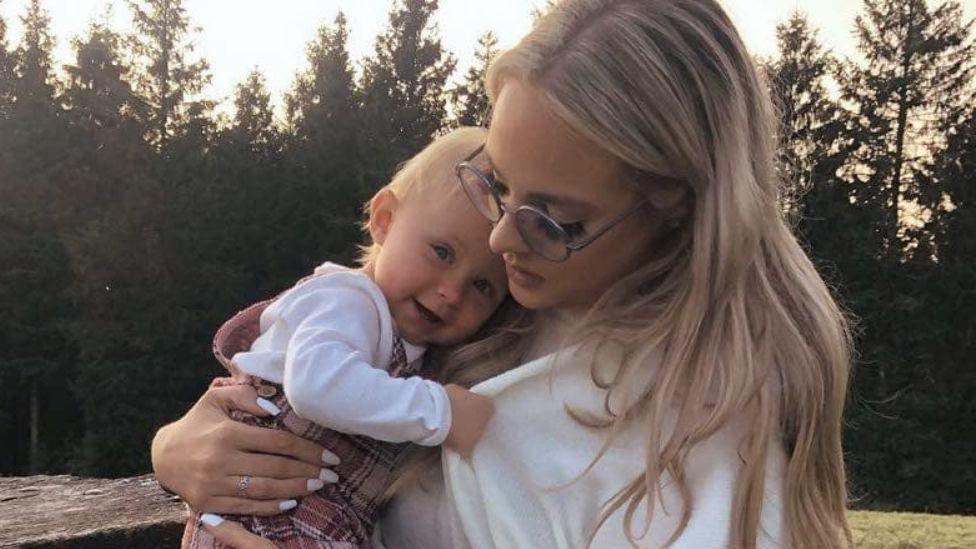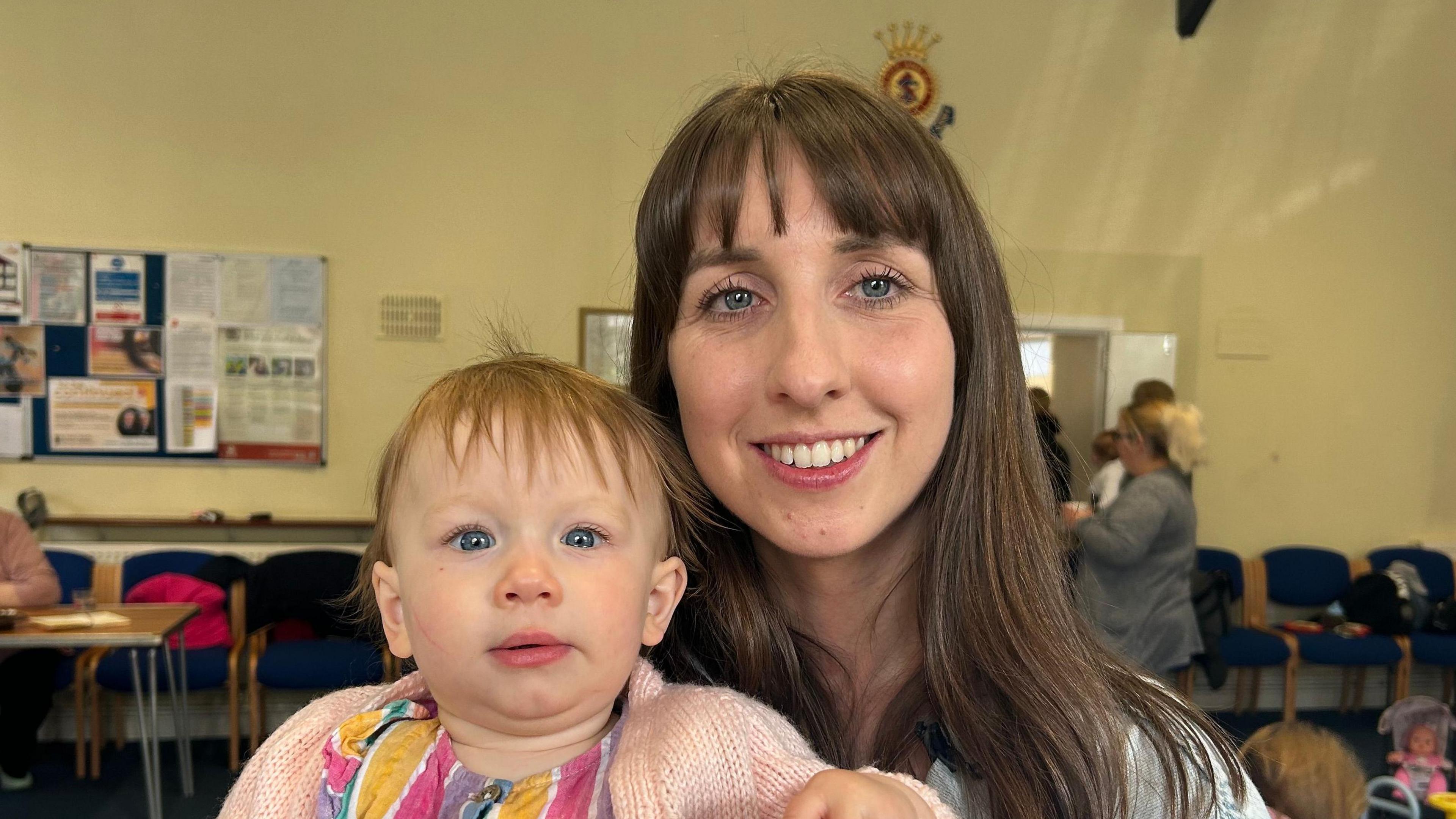A cuddle could tear my son's skin due to rare disorder

Albi's mouth and oesophagus blister, making eating and swallowing painful. He is fed through a tube into his stomach
- Published
A couple whose son has a rare genetic skin condition say it is hard to process that a cuddle could "tear his skin".
Twenty month old Albi was born with a severe form of recessive dystrophic epidermolysis bullosa (RDEB), a disorder which causes his skin to break out in blisters or tear with the slightest friction.
It also affects his internal skin, causing his mouth and oesophagus to blister and making eating and swallowing painful. He is fed through a tube into his stomach as a result.
Albi's parents Erin Ward, 23, and Calum Blackman, 26, from Tondu in Bridgend, are hoping a cure can be found for their son, who lives in pain every day.
My 'butterfly skin' could kill me
- Published18 January 2020
Football legend in new 'butterfly skin' charity challenge
- Published23 July 2024
'We take it day by day with son's skin condition'
- Published12 August 2024
Warning: Contains images some people may find upsetting.
"You would never believe that skin could be so fragile and just cuddling your child could tear their skin," said Ms Ward.
When Albi was born on 19 August 2023, doctors at the Princess of Wales Hospital in Bridgend knew that something was wrong when they saw that skin was missing from his right leg, left foot and hands.

Albi was born with skin missing from his right leg and left foot
Ms Ward said doctors initially thought Albi could have rubbed his legs together while in the womb and removed the skin.
But after speaking to medical experts at Great Ormond Street Hospital in London, RDEB was diagnosed.
"Not only is that a skin diagnosis, it is also a life-limiting diagnosis," said Mr Blackman.
"It's a hard-hitting diagnosis to receive."

Erin and Calum with their son Albi, who was born with a severe skin condition which causes his skin to break out in blisters
What is recessive dystrophic epidermolysis bullosa (RDEB)?
Epidermolysis bullosa (EB) is the term used to describe a number of rare genetic conditions which cause the skin to blister and shear in response to minimal friction and trauma.
In the case of recessive dystrophic EB (RDEB), which affects Albi, the skin is extremely fragile, often with extensive blistering and wounds.
There is an increased risk of developing a type of cancer called squamous cell carcinoma in older children and adults.
There is currently no cure for the condition or any effective treatments to prevent the skin problems caused by it.
"[Albi] is missing type seven collagen which is a protein which basically glues his skin to his body, so in Albi's case the slightest bit of friction will cause his skin to blister," said Ms Ward.
The couple spend two hours removing Albi's old bandages and applying new ones every day.
It is a painful process for Albi and he is prescribed painkillers, but his Mum said they were often not strong enough.
"It all depends on Albi on how long it takes though because it's really painful for him, we have to be thorough, so it does take up a lot of the morning. "
The bandages which cover him from his neck to his toes help to heal his skin and also offer a layer of protection.
"It means he can play and he has that extra padding to protect him and reduce the friction," she said.
"It means bandages every day for the rest of his life - they're a must."
Young people with EB are sometimes called "butterfly children" because their skin is fragile, like a butterfly's wing.
Ms Ward, who runs a nail and beauty business, said she was too scared to hold Albi when he was first born.
"We would carry him around on a pillow with silk sheets.
"We didn't let anyone hold him and we were so scared of anything happening to him.
"[But] the more time we spent with him the more confident we got and we became experts in how to hold our own child."
It is estimated that more than 5,000 people are living with EB in the UK.
Both Ms Ward and Mr Blackman were silent carriers of the gene.
"Your stomach drops when you see someone trying to interact with him, or another child wanting to play, " said Mr Blackman.
"You have a fear are they going to hurt him and will it take weeks for him to recover if they do hurt him. "

Albi is part of a stem cell therapy trial at Great Ormond Street hospital in London
Ms Ward said she needed to educate people about Albi's condition wherever she goes.
"We tend to get a lot of looks from people, they'll say 'what's happened to him, has he been in the wars?'
"I understand, because you don't normally see a baby with wounds on his face and covered in bandages.
"It can be tough and upsetting, but Albi is such a happy child and I think it's not about me, it's about him."
Albi is part of a stem cell clinical trial at Great Ormond Street Hospital called Rhea Cell, and he undergoes infusions every two months.
His parents are hoping a cure will be found in the future and are raising awareness of the condition.
"At the moment Albi heals quickly but when he gets older his body might start slowing down, so now a wound which heals in two weeks could take a few months to heal or not at all," said Ms Ward.
"Many with EB rely on a wheelchair to get about because of the blisters on their feet because it becomes too painful to walk and sometimes fingers can fuse together so we have to keep an eye on his hands.
"We wish we could wrap him cotton wool all over to protect him but we want him to have fun and live his life too."
More stories from Wales
- Published16 April

- Published12 April

- Published15 April
